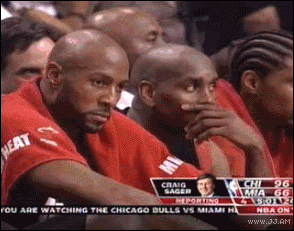https://theanalyst.com/na/2021/04/how-deandre-ayton-has-emerged-in-phoenix/Over his past 17 games, he is averaging 17.5 points, 10.5 rebounds, 1.2 blocks and 0.8 steals with a 70.7 true-shooting percentage, helping guide Phoenix to a 14-3 record during that span. A simplified offensive role, encouraging him to trim the fat off his shot profile and focus on maximizing his physical tools as a scorer and however else required, is laying the groundwork for a midseason progression.
Playing alongside two All-Star ball-handlers, each of whom manipulate defenses with pace, craft and scoring, Ayton provides a mammoth lob threat. He’s timing his rolls properly, floats off the ground seamlessly and corrals passes with his 7-foot-6 wingspan and a wide catch radius. Both Paul and Book can just toss the ball near his zip code and quite often, Ayton delivers.
(Nice video examples in link)
When his path toward a basket is confronted with a roadblock, mandating he power through, over or around defenses to score. For someone of his tools and physical dimensions, those instances have led him to wilt or caused a sputtered decision-making process in which defenders recover to swarm him. He’d shy away from contact and burp up hurried hook shots or ill-advised fadeaways. The outcome wasn’t optimal as frequently as it should be.
He is 7 feet, 250 pounds. Few guys should stymie him on the roll or deep catches in the post. Upon this blossoming, he’s embracing contact, acting promptly with the ball in his hands and stepping through post touches rather than stepping back. A mentality shift is occurring, which is empowering Ayton in this role as a play finisher where his time of possession comes in short spurts and the Suns rely on him to maximize those opportunities.
(Nice video examples in link)
Success around the rim has been a staple of his interior excellence each year. He shot 70.6% at the rim as a rookie, 66.0% last season and is up to 71.1% this season – 13th in the league among those who have played at least 40 games. The tweak is a refusal to settle, boosting his percentage of field-goal attempts in the restricted area to a career-high 54.4%. He has almost entirely eliminated mid-range jumpers, which are down to 16.1% of his field-goal attempts after sitting at 28.6 and 25.4 in his first two seasons – shots of which he’s never connected on better than 38%.
Deandre Ayton: Field-Goal Attempts by Location
Distance 2018-19 2019-20 2020-21
% of FGA in Restricted Area 47.2 44.7 54.4
% of FGA From Paint 70.9 72.4 80.6
% of FGA From Mid-Range 28.6 25.4 16.1
2-PT% From 14+ Feet 34.7 37.4 39.3
Phoenix has, more or less, boasted a top-five defense the entire season. Individual talent, with guys like Mikal Bridges, Jae Crowder, Cameron Payne, Jevon Carter, Paul and Ayton, are the foundation and the sum of those skills is best reflected in ball-screen coverage. Bridges, Payne and Paul set the tone at the point of attack by snaking around screens to stay attached. Crowder and Paul are pests at the nail. Still, Ayton is the exclamation point of this elite pick-and-roll defense.
The tone-setters do not isolate him in 2-on-1 scenarios, backpedaling against fiery downhill drives. He typically stations at the free-throw line, equipped to deter mid-range pull-ups with perimeter defenders dissuading off-the-bounce triples. Ayton smoothly covers ground laterally, vertically contests shots and mucks up pocket passes, floaters and lobs with lively hands. Anthony Davis and Rudy Gobert are the modern gold standard for mobility, activity and wide-ranging ground coverage for pick-and-roll big men, but Ayton is showing he could possibly approximate that level down the line. He’s already flustered a litany of All-Star ball-handlers, big and small, in his third year.
(Nice video examples in link)




















